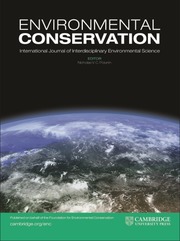Article contents
Optimal Policies for Conservation of Large Mammals, with Special Reference to Marine Ecosystems*
Published online by Cambridge University Press: 24 August 2009
Extract
Among the larger mammals, marine types offer some unique insights and problems for management. United States laws require that they be managed ‘to maintain the health and stability of the marine ecosystem.’ The relevant statute (Marine Mammal Protection Act of 1972) requires maintenance of an ‘optimal sustainable population’, which is being interpreted as a range between the level giving a maximum sustainable yield (MSY) and asymptotic levels. Emerging evidence pertaining to marine mammals, and perhaps applicable to a larger class of vertebrates, indicates that the MSY point may be well above the logistic-curve 50% point.
‘Reproduction curves’ of various sorts are used in management as operational representations of population self-regulation (density-dependence). A variety of theories and hypotheses concerning such regulation now exists, though none is adequately supported as yet. A general model for self-regulation in long-lived species is suggested as being comprised of stages of regulation. Immature mortality is postulated as the first stage, followed by age of first reproduction and then reproductive rates of adult females. The fourth and last stage, as populations reach maximum sustainable levels, is assumed to involve changes in adult survival.
Although a model of the kind suggested here offers some useful insights as to harversting strategies, a more quantitative (functional) basis will be needed for actual management applications.
- Type
- Main Papers
- Information
- Copyright
- Copyright © Foundation for Environmental Conservation 1977
References
- 134
- Cited by


